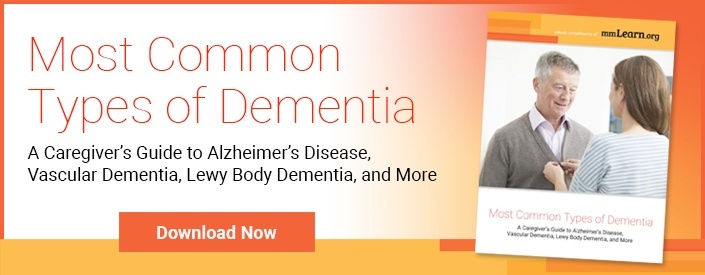 As seniors spend more time at home or grow sentimental about objects from days gone by, many struggle with a cluttered home. But clutter isn’t just an eyesore. It can quickly turn to hoarding behavior, compulsively saving items with no real value.
As seniors spend more time at home or grow sentimental about objects from days gone by, many struggle with a cluttered home. But clutter isn’t just an eyesore. It can quickly turn to hoarding behavior, compulsively saving items with no real value.
In this guide, we will break down the danger of hoarding, the reasons behind this behavior, and how caregivers can help seniors break hoarding patterns.
Why Is Hoarding Behavior Problematic?
Hoarding is more than just a nuisance for family caregivers and other care providers. Clutter takes over living spaces, stripping the functionality from kitchen counters, sinks, bathrooms, and more. This ultimately affects a senior’s quality of life.
Physically, hoarding behavior creates the following problems.
- Difficulty walking safely through a room (risk of falling)
- Unsanitary living conditions
- Fire risk, particularly when items are hoarded in the kitchen
- Expired food in the refrigerator or pantry
But the repercussions of hoarding aren't just physical. There are social and emotional ramifications of hoarding behavior.
- Unpaid bills hiding in piles of mail
- Difficulty managing daily living in a cluttered environment
- Frustration and stress from lack of organization
- Loneliness and social isolation
Reasons Behind Hoarding Behavior
Psychologist and author Michael Tompkins, Ph.D., who wrote Digging Out: Helping Your Loved One Manage Clutter, Hoarding, and Compulsive Acquiring, said hoarding occurs for three primary reasons:
- An intense personal attachment to objects (or even trash) others see as trivial
- A belief that many items have intrinsic value (such as artwork found objects like driftwood)
- An assumption that potentially useful items should be saved for “a rainy day”
Hoarding behavior can occur at any age, but it’s particularly common and problematic for seniors. Many aging seniors who hoard already have a history of hoarding behavior. The behavior worsens as hoarding behavior becomes a way to hold onto the past or maintain a sense of control.
The Link Between Hoarding Behavior and Alzheimer’s Disease
For some seniors, hoarding behavior has a clinical cause: both pre‑Alzheimer’s patients and those vulnerable to anxiety sometimes hoard as a defense mechanism against future loss. Hoarding can feel like a small means of control during the early to middle stages of dementia.
The Alzheimer's Association has identified a few possible psychological and medical causes for hoarding, as well as rummaging and hiding behaviors:
- Physical changes in the brain leading to confusion, memory loss, and impaired judgment
- Loss of control
- The desire for a sense of security
- Ability to touch familiar objects brings comfort
- Fear of losing items or being robbed
- Boredom, lack of stimulation, and difficulty initiating new activities
How Can Caregivers Help?
While it might be tempting to proactively reorganize and remove clutter from a senior’s environment, this is not always beneficial. People with dementia need to feel safe and secure. It is essential to maintain seniors’ sense of dignity and control.
So what can you do to help with hoarding behavior?
- Take charge of safety first. Even if a senior objects, it is important to remove fire hazards and poisonous materials, such as cleaning fluids, glue, and expired medications. Also move clutter from walkways, heating sources, and stairs. Those items can be piled into a safe place for future organization.
- Organize the clutter. Once dangerous items have been removed, sort remaining clutter into large baskets and bins. Also visit DMA Choice, Catalog Choice, and OptOutPrescreen to stop the accumulation of junk mail. This will staunch the flow of additional clutter.
- Make them part of the process. Many people have great success with a three‑step plan where the caregiver provides three bins: one for items to keep, one for donating, and one for trash. Seniors may need some help going through their clutter, but giving them choices will leave them feeling empowered.
- Immediately remove all items to be discarded. Once you decide to get rid of items, discard them immediately. Otherwise, aging adults could rummage through the garbage and return items to their homes.
To help make seniors part of the process, follow these tips from CaregiverStress.com:
- Gently approach the idea of health and safety. Let seniors know you care about their well‑being.
- Consider control issues. Remind seniors that they need to decide where some of the clutter goes, lest someone else decides for them.
- Draft an agreement. Let seniors help write the agreement about the process so they feel empowered.
- Cheer small victories. If you clear a table completely, celebrate! You can also get creative with the process. Photograph mementos to comfort seniors who are afraid of forgetting. Verbally wish items goodbye. Work slowly and compassionately through the process.
Hoarding behavior can be frustrating and overwhelming for both seniors and those who care for them. In the following video, geriatric psychiatrist Dr. Thomas Weiss gives an in‑depth presentation on the causes and treatment options for hoarding behavior.

